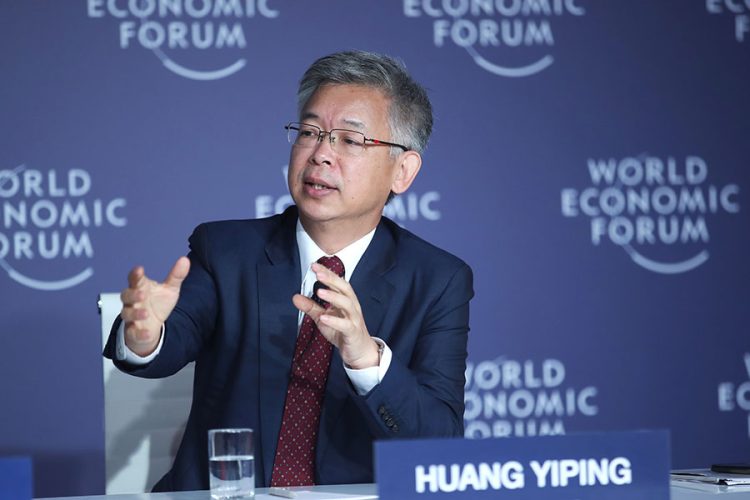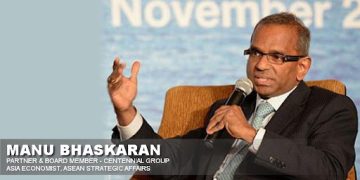1. Introduction: A Shifting Center of Gravity
By 2025, the global financial landscape is increasingly multipolar.
Where once the United States and Europe dictated capital flows, monetary policy, and market norms, the 21st century is seeing the rise of Asia — not merely as a manufacturing hub, but as a financial powerhouse.
Huang Yiping, one of Asia’s foremost authorities on macroeconomics and financial markets, emphasizes that emerging markets, particularly China and India, are not just followers of global finance but active architects of a new order.
From the digital yuan to cross-border financial infrastructure, Asia is rewriting the rules that underpin capital allocation, currency use, and risk management.
This essay examines the drivers, implications, and risks of Asia’s ascent in global finance, through the lens of Huang’s research and policy insights.
2. Asia’s Macroeconomic Resilience in a Slower World
Global growth projections for 2025 have been revised downward by both the IMF (3.2%) and OECD (2.9%), reflecting slower consumer demand, trade frictions, and geopolitical tension.
Yet within this general slowdown, Asia demonstrates structural resilience:
- China maintains a growth rate of around 4.5%, supported by domestic consumption and selective fiscal stimulus.
- India continues its trajectory as a high-growth engine, with GDP expansion exceeding 6%, driven by technology, services, and infrastructure investment.
- Southeast Asia benefits from supply chain diversification and digital finance adoption, attracting foreign capital and talent.
Huang argues that resilience is a function of policy agility.
Unlike developed economies constrained by aging demographics and debt overhangs, many Asian nations retain both fiscal space and labor dynamism, allowing them to smooth shocks without destabilizing markets.
Furthermore, these economies are increasingly financialized domestically, with growing capital markets, insurance penetration, and institutional investors, creating deeper buffers against external volatility.
3. Currency Innovation and the Digital Yuan
One of the most transformative developments in Asia is the emergence of central bank digital currencies (CBDCs).
China’s digital yuan (e-CNY) represents not just a domestic payment innovation but a potential international monetary instrument.
Huang emphasizes several key implications:
- Cross-Border Efficiency – e-CNY enables instant settlement in trade transactions with countries that accept or pilot the digital yuan, reducing dependence on the U.S. dollar and correspondent banking systems.
- Monetary Policy Flexibility – Digital currency allows more granular tracking of money flows, enabling targeted stimulus and improved financial stability.
- Financial Inclusion – Even rural and underbanked populations gain access to digital financial services, expanding the domestic savings pool.
- Geopolitical Leverage – Adoption of the e-CNY in Asia, Africa, and Latin America strengthens China’s economic influence, potentially redefining global currency hierarchies.
While promising, Huang cautions against overestimating the reach of the digital yuan. Its international adoption depends on trust, interoperability with existing systems, and political acceptance.
4. Capital Flows and Investment Patterns
Asia is increasingly both a recipient and source of global capital.
- Outbound investment: Chinese companies continue to invest in strategic sectors abroad, particularly in technology, energy, and infrastructure.
- Inbound investment: Foreign institutional investors are attracted to robust domestic markets in China, India, and Southeast Asia, seeking yield amid low-interest environments in the West.
Huang points out that these flows create a double-edged dynamic:
- On the one hand, deepening capital markets enhance liquidity and sophistication.
- On the other, reliance on cross-border capital exposes emerging markets to global risk sentiment swings, often beyond domestic control.
This vulnerability was evident in 2023–2024 during rapid dollar appreciation, when emerging Asian markets faced pressure on local currencies and asset prices.
Policy responses, including reserve accumulation and interest rate adjustments, demonstrated the delicate balancing act required to maintain stability.
5. Regional Financial Integration: ASEAN, India, and the New Silk Routes
Huang highlights that Asia’s financial future depends not only on national initiatives but also on regional integration.
- ASEAN: The ASEAN Banking Integration Framework (ABIF) and cross-border payment initiatives aim to harmonize regulation, reduce transaction costs, and facilitate intra-regional lending.
- India: Initiatives such as the Unified Payments Interface (UPI) and RuPay network position India as a digital payments leader.
- Belt and Road Financial Corridors: China’s investment in regional infrastructure, coupled with financial instruments denominated in e-CNY or local currencies, creates a networked economic influence across Asia and beyond.
Huang sees regional integration as a hedge against Western dominance, providing Asia with a structural buffer against external shocks.
Yet integration remains uneven, constrained by political rivalry, regulatory divergence, and currency volatility.

6. Monetary Policy in the Age of Fragmentation
Emerging markets face a dilemma: how to maintain monetary autonomy while participating in a globally interconnected financial system.
Huang identifies three major challenges for 2025:
- External Shocks – Dollar strength, U.S. interest rate policy, and global trade disruptions directly impact local liquidity and borrowing costs.
- Capital Volatility – Short-term flows, often speculative, can destabilize exchange rates and asset markets.
- Policy Credibility – Maintaining investor trust while pursuing domestic growth is delicate, particularly in economies with evolving institutional frameworks.
China, for example, uses a mix of macroprudential policy, targeted lending, and digital currency controls to manage domestic liquidity without destabilizing external confidence.
India relies on flexible inflation targeting, foreign exchange intervention, and capital account management to maintain stability amid volatile capital flows.
Huang stresses that emerging market central banks are no longer mere “followers” of developed economies; they are strategic actors, designing policies with both domestic and international impact.
7. Financial Regulation: Catching Up with Innovation
Asia faces a regulatory challenge: financial innovation has outpaced the rulebook.
- Fintech: Mobile payments, peer-to-peer lending, and digital wealth management expand access but also create opacity and risk.
- Cryptocurrencies and DeFi: Unregulated assets introduce systemic risk and complicate monetary policy implementation.
- AI in Finance: Algorithmic lending, robo-advisors, and predictive credit scoring improve efficiency but can magnify bias and risk concentration.
Huang advocates a proactive regulatory approach, combining innovation-friendly frameworks with risk oversight.
Countries like Singapore, Hong Kong, and China are experimenting with sandbox regulations, CBDC pilots, and cross-border compliance mechanisms, seeking a balance between growth and stability.
8. Asia’s Role in the Multipolar Financial Order
By 2025, Asia is no longer a peripheral actor. Its currency innovations, capital markets, and policy experimentation increasingly shape global financial norms.
Huang identifies key consequences:
- Diversification of reserve assets: Central banks globally are reducing dollar dependency, holding more RMB, yen, and regional currencies.
- Shift in investment flows: Emerging markets are becoming destinations for global capital, reversing historical patterns.
- Policy influence: Asia sets examples in digital currency governance, sustainable finance, and crisis response mechanisms.
However, the rise is not without tension. U.S.–China competition, India–China rivalry, and geopolitical disputes over technology and infrastructure create a complex environment. Asia’s challenge is to leverage economic influence without provoking destabilizing conflict.
9. Risks and Vulnerabilities
While Asia demonstrates resilience, Huang cautions that vulnerabilities persist:
- Debt accumulation: Corporate and sovereign debt in Asia has risen, particularly in China and Southeast Asia, creating potential stress points.
- Overreliance on policy support: Rapid growth has often depended on fiscal or monetary stimulus, risking moral hazard.
- Global interconnection: Despite regional buffers, Asia remains exposed to developed-market shocks, from interest rates to trade restrictions.
- Technological fragility: Cybersecurity risks, operational failures, and lack of standardization can amplify systemic risk.
These factors underscore Huang’s central thesis: emerging markets must pursue growth and innovation while building resilient financial institutions capable of managing complexity.
10. Conclusion: The Asian Century in Financial Perspective
Huang Yiping’s vision of the Asian financial landscape in 2025 emphasizes agency, innovation, and strategic foresight.
Emerging markets are no longer passive recipients of global capital; they are active shapers of financial norms, technological standards, and regional integration.
The implications for global finance are profound:
- The U.S. dollar’s dominance may gradually erode.
- Capital flows will diversify, creating new hubs of influence.
- Regulatory and monetary innovation in Asia will influence policy debates worldwide.
Yet success is contingent upon prudent governance, credible institutions, and cross-border coordination.
The Asian century, in finance, is not preordained — it is constructed by policy choices, technological adoption, and the management of risk.
Huang reminds us that in an era of slower global growth, trade frictions, and monetary uncertainty, Asia’s rise represents both opportunity and responsibility.
Its choices will reverberate across capital markets, currencies, and institutions — shaping the rules of finance for decades to come.



































